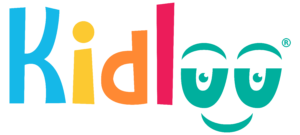Neurodevelopmental Approaches in Physiotherapy for Children with Neurological Disorders

Introduction
Children with neurological disorders face unique challenges that impact their motor skills, coordination, and overall development. In the realm of physiotherapy, a specialized approach known as Neurodevelopmental Treatment (NDT) or Bobath approach has emerged, aiming to address the specific needs of these children. In this blog, we will explore the principles and applications of neurodevelopmental approaches in physiotherapy, shedding light on how these techniques can profoundly impact the lives of children with neurological disorders.
Understanding Neurodevelopmental Principles
Neurodevelopmental approaches in physiotherapy are rooted in the understanding of normal movement and developmental sequences. The principles are derived from observing typical motor development and are applied to guide interventions for children with neurological disorders. The primary goal is to facilitate optimal movement patterns and functional abilities, fostering independence and participation in daily activities.
Key Components of Neurodevelopmental Approaches
Normalization of Muscle Tone:
Children with neurological disorders often experience abnormal muscle tone . Neurodevelopmental approaches aim to normalize muscle tone through facilitation techniques, inhibitory strategies, and proper positioning.
“Muscle tone is the amount of tension (or resistance to movement) in muscles.”
“Facilitation methods aim to enhance or encourage the activation of specific muscles or muscle groups. They are employed when there is a need to improve the strength, coordination, or overall function of certain muscles.”
“Inhibitory strategies are employed to reduce excessive muscle tone or hyperactivity in certain muscles. They are particularly useful when dealing with spasticity or hypertonicity, common challenges in children with neurological disorders.”
Postural Control and Alignment
Achieving and maintaining proper postural control is crucial for functional movement. Physiotherapists focus on facilitating optimal alignment and stability to enhance a child’s ability to engage in activities.
Movement Patterns and Transitions
By analyzing typical movement patterns, therapists tailor interventions to encourage smooth transitions between various postures and movements, promoting fluid and efficient mobility.
Handling and Facilitation Techniques
Skilled handling is a hallmark of neurodevelopmental physiotherapy. Therapists use gentle, hands-on techniques to guide a child’s movement, encouraging the development of more coordinated and purposeful actions.
Task-Specific Training
Interventions are designed to be task-specific, focusing on activities relevant to the child’s daily life. This approach enhances the transfer of newly acquired skills to real-world situations.
Applications in Children with Neurological Disorders
Neurodevelopmental approaches are particularly beneficial for children with conditions such as cerebral palsy, spina bifida, and genetic neurological disorders. These approaches address specific challenges associated with movement, coordination, and motor planning.
Cerebral Palsy: In children with cerebral palsy, neurodevelopmental techniques can help improve muscle tone, reduce spasticity, and enhance functional mobility, fostering greater independence.
“Spasticity is a condition characterized by increased muscle stiffness, involuntary muscle contractions, and resistance to stretching.”
Spina Bifida: Children with spina bifida may benefit from interventions that focus on postural control, facilitating optimal alignment and improving mobility in various positions.
Genetic Neurological Disorders: For children with genetic neurological disorders, tailored neurodevelopmental physiotherapy can target specific movement patterns and developmental milestones, adapting to the unique characteristics of each condition.
Benefits of Neurodevelopmental Approaches
Improved Motor Function: Neurodevelopmental interventions aim to improve motor function, enabling children to perform daily activities more efficiently.
Enhanced Independence: By addressing movement patterns and promoting functional abilities, these approaches contribute to increased independence in self-care and other activities.
Facilitates Neuroplasticity: Neurodevelopmental techniques leverage the brain’s capacity for neuroplasticity, encouraging adaptive changes that support improved motor control and coordination.
“Neuroplasticity, also known as brain plasticity or neural plasticity, is the ability of the brain to reorganize and adapt by forming new neural connections throughout life.”
Individualized Care:
Each child’s unique challenges and strengths are considered, allowing for personalized interventions that cater to their specific needs and goals.
Conclusion
Neurodevelopmental approaches in physiotherapy represent a compassionate and effective approach to supporting children with neurological disorders. By harnessing the principles of typical movement development, physiotherapists empower these children to overcome challenges, fostering not only improved motor function but also a greater sense of autonomy and participation in the world around them. As our understanding of neurodevelopment continues to evolve, so too does the potential for these approaches to shape brighter and more promising futures for children with neurological disorders.
